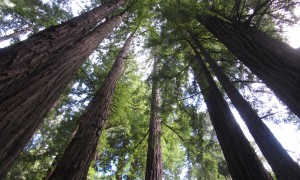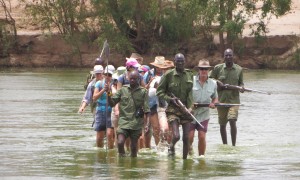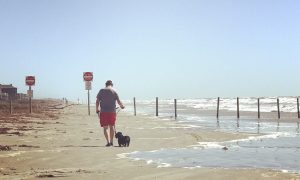 by Kate Dernocoeur, guest blogger
by Kate Dernocoeur, guest blogger
There’s a certain natural elegance to the sight of horses running wild, as they do at the Black Hills (SD) Wild Horse Sanctuary near Hot Springs in southwestern South Dakota. A visitor can still see living history in the mustangs who range across this 11,000 acre preserve. These rough but regal horses still display the traits of an Iberian (Spanish) lineage that extends 500 years back to the time of Christopher Columbus.
The story isn’t completely happy: in the Sorraia bloodline, fewer than 200 are left. Other ancient lineages are also on the edge despite that there were upwards of two million mustangs running free on the western plains in the 1800s. Barbed wire, settlement and other challenges have taken a toll.
Mustang horses hold an honored place in American history, though. They were the backbone of the work done by cowboys and settlers before trucks and tractors. As sanctuary founder Dayton O. Hyde (now in his 80s), said in a newsletter, “To me, these game, gutsy animals with tangled manes and hooves like iron, embodied Freedom, the essence of the American Spirit!”
I reach the sanctuary after a day at the nearby national parks of Jewel Cave and Wind Cave. I saw Hyde’s billboards, and wanted to know more about the wild mustangs. I arrive after 6:00 p.m. on a Saturday expecting the place to be closed, but am delighted to meet Monty, the summer manager, holding forth in the visitor’s center. Soon, I have a spot at one of the four campsites, and the chance to help with chores Sunday.
At 7:00 a.m., Deb, a summer volunteer, appears. We hop in the ancient flatbed pickup, autofeeder full of oats, and head out. As we enter the different pastures, fenced to keep the various herds distinct, we see other wild creatures. Deer. Large groups of turkeys. And a sudden tawny flash. For maybe 20 seconds, I get my first-ever view of a mountain lion as it bounds for the trees along the rimrock!
These wild horses are notoriously hardy survivors, a gift of genetics. They group together in bands, like families. They cope with harsh winters, mountain lions like the one we saw, and more. One foal had been rattlesnake bit—three times. But the reality is, their future needs a leg-up from humans. I know that the place is funded, in part, by the sale of registered quarter horses and eye-catching paint horses who also live here. But the market is dismal now, and there’s legitimate concern about how to pay the hay bill ($75,000 last year).
I witness the eagerness of the horses when they hear the chug of our old breakfast-delivery truck, now that the range is summer-dry and less nourishing. Hundreds trot up, even the elderly mares in their thirties, and show me what they are made of. Feisty. Strong. Intelligent. This place impresses me. These horses are wild, free—and very lucky to have this place.
Kate has loved (and ridden) horses since her godmother perched her at the age of two on a Shetland pony named Peanuts.









